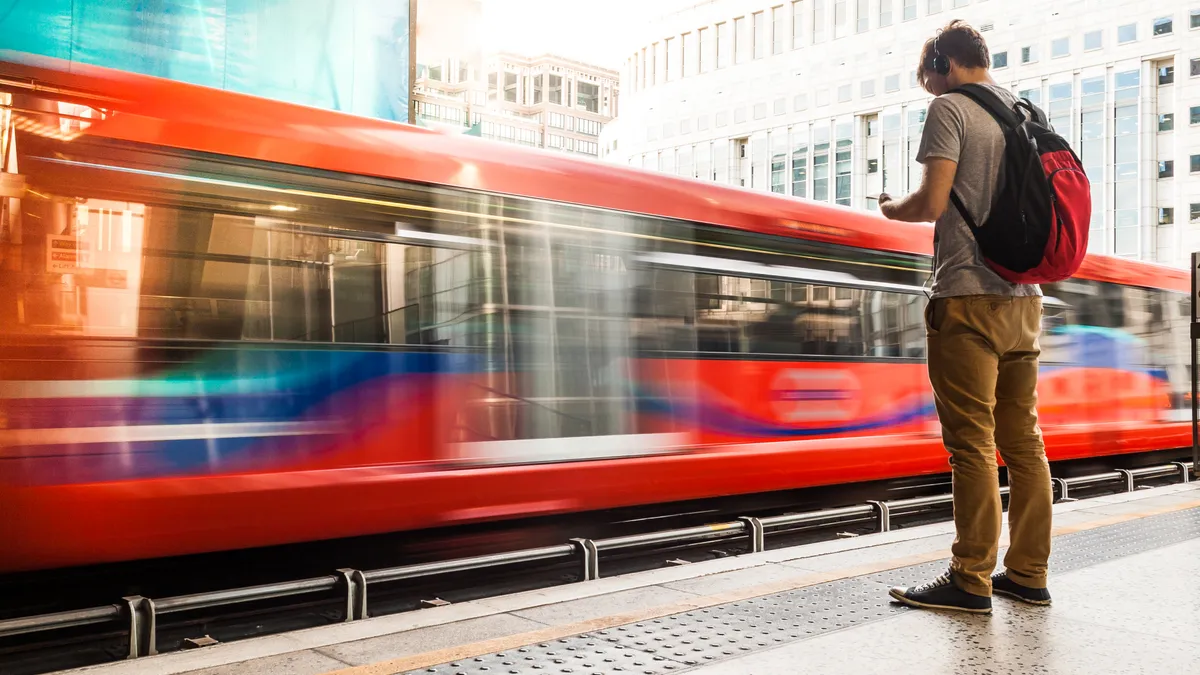Dive Brief:
- Federal lawmakers have proposed a new grant system that would bolster public transportation on or near colleges that cater to historically marginalized populations.
- A bipartisan bill spearheaded by U.S. Rep. Conor Lamb and Sen. Bob Casey, both Democrats from Pennsylvania, would authorize grants to transportation providers working with community and tribal colleges, as well as historically Black and minority-serving institutions. The funding would attempt to help colleges improve nearby public transportation and subsidize students' transit costs.
- Similar provisions exist in President Joe Biden's sweeping Build Back Better spending plan, but it does not explicitly specify that projects near colleges would benefit from the funding.
Dive Insight:
College access activists were crestfallen that the White House dropped big-ticket higher education items like tuition-free community college from Build Back Better. But many are celebrating the grant funding's inclusion in that bill.
Julie Peller, the executive director of Higher Learning Advocates, described it on Twitter as a "hidden gem." It earmarks about $10 billion for not just transportation enhancements but also access to affordable housing and other infrastructure in disadvantaged communities.
The House passed the Build Back Better legislation Friday. It faces a rocky path in the Senate, where Democrats hold a tenuous majority.
Lamb and Casey's legislation is explicitly education-oriented. It allows the federal government to channel funding to transportation authorities that work with colleges on such projects as additions to bus or rail stops, and for new routes.
Their bill directs federal agencies to prioritize initiatives that would benefit institutions where more than 25% of students receive federal Pell Grants, which are used as a proxy for measuring low-income status. Projects that have the federal government footing the bill for more than 80% of capital costs or more than 50% of operating costs would not be eligible.
More than a dozen higher ed organizations, including the Association of Community College Trustees and the State Higher Education Executive Officers Association, have backed the proposal. They wrote to Congressional leaders earlier this month urging support for the measure.
They wrote the legislation would increase the number of public transit stops within walking distance of colleges and the frequency of service, which would better align with class schedules. "It would also help low-income college students pay for the cost of public transportation for students, which we know can be a barrier to college persistence and completion," the groups wrote.
Recent research shows students at some of the colleges the bill targets can't readily access public transit.
Over half of community and technical colleges' main campuses have a public transit stop within walking distance, according to a report by the Seldin/Haring-Smith Foundation, which advocates for equitable access to public services. The foundation defined walking distance as being within 1/2 of a mile of a campus.
But 25% of community or technical schools have stops between 1/2 of a mile and 4 1/2 miles, and expanding infrastructure would benefit these 345 colleges, the report states.
The bill "is particularly exciting from a higher ed perspective," said Abigail Seldin, the foundation's chief executive.
She said she was surprised at the high "volume of opportunity" in states such as Kansas and others in the Great Plains, where nearly 38% of two-year schools had transit stops within the 1/2 of a mile to 4 1/2 mile range.
Seldin said the research relied on federal data that could not pinpoint community colleges' branch campuses. But the foundation plans to release a new version of the study in early 2022 that will encompass them. She did not expect the update to materially change the results.













